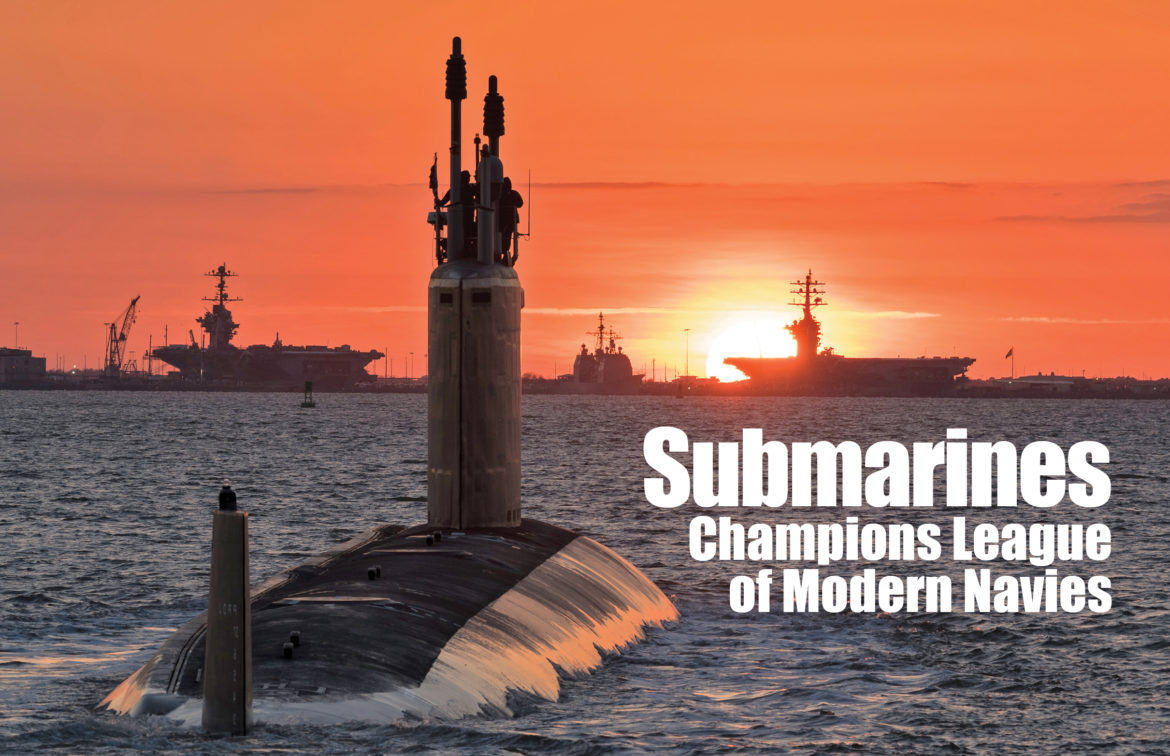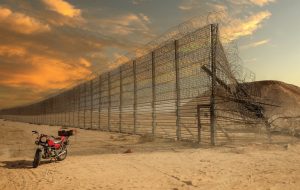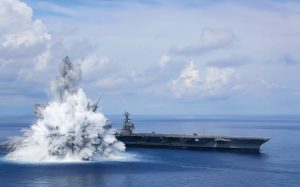Strait of Malacca is the shortest shipping channel between the Indian Ocean and the Pacific. It links the Middle East with Japan and China and it is a critical route for imports and exports. To the West, the Strait of Gibraltar allows for exit from the Mediterranean Sea to the Atlantic Ocean and access to European and North American countries. They are both arteries of the modern supply chain and are protected by submarine wielding countries directly adjacent to them.
By Strait of Malacca, the Singaporean Navy is modernizing its navy to the tune of 6 submarines (including 2 Type 218 SG “Invincible” class subs), China invests in new submarines and so do Japan, India, Australia, Indonesia and the Philippines By Gibraltar, the Algerian Navy has increased its number of subs (Kilos and Type 636 project submarines, some equipped with Club missiles).
Strait of Hormuz is the most important water way out of the Middle East, and it is responsible for safe passage of $ 1.2 billion of oil every day. From the submarine perspective, Iranian forces possess more than 30 midget and coastal submarines. When a country develops such number of submarines it is based on the defensive and offensive plans for the benefit of national interest. Eastwards from Iran, only Cambodia is without submarines or not currently in the process of procuring subs. However, westwards, there isn’t a single submarine force until one reach Egypt.
Submarine as a Force Multiplier
A country equipped with submarines belongs to the Navy Champion League. The submarines are the most expensive and secret diamonds for every Navy, alliance and coalition. Their status and price point are justified by their flexibility – a single conventional submarine is ready to satisfy or participate in the execution of 67 % of GCC countries’ maritime tasks. Examples of this in the Middle East are protecting offshore oil and gas infrastructure against terrorist attack, building vast countermeasure capabilities against asymmetric warfare at sea together with enhancing surface and underwater surveillance and detection capabilities. Every new submarine provides unique invisible defensive and offensive capabilities when compared with the visible and noises surface/air navy forces. This is a critical benefit of the submarine’s operation. The whole doctrine and operations of submarine activity is based on total secrecy. The national military organization command and control their own submarines and never comment on their operations.
Submarine tasks vary from strategic, operational or tactical levels and history has proven that submarine operations can start (sinking of British RMS Lusitania sub by the German subs) or finish (sinking of Argentine ARA General Belgrano sub by the British sub during the Falkland war in 1982) international conflicts. Submarines are for rich and poor countries – relatively economically weak countries invest in submarine force as an invisible threat which engages or requires more potential enemy effort. With submarines in forces, navies can improve the following capabilities: force preparation (training, exercising), ISR & Environment collection, underwater maneuvering, underwater engagement, sustaining & moving of forces and preventing kinetic and non-kinetic attack from surface and sub surface.
Submarines are highly capable platforms that can provide asymmetric deterrence against a superior foe. They can also collect intelligence and reconnaissance, escort amphibious forces and insert Special Forces. Every submarine executes undetected missions. Their ability to conduct long-term operations, independently carry out combat missions near the opponent’s bases and ports classifies them as the key option for most of offensive operations. Even the midget submarine and conventional submarine brings a lot of similar deterrence options and as a minimum discourage unfriendly submarines to operate close or in the territorial waters.
Procurement: Buying or Building?
The world is experiencing exponential growth of submarines; by the 2030 there will be 288 submarines in East and South East Asia, up from 200 in 2010. The latest big one is the Australian project to design and build the fleet of 12 conventional submarines in strong cooperation with the French Naval Group. The first submarine is due to be delivered in the early 2030s and the final vessel in the 2050s. How does one go about trying to predict the future battlefield? The starting point is always an analysis of the national vision and strategies, evaluation of existing plans in front of own forces and challenges then aligning them with potential short- and long-term adversaries’ capabilities. Based on these activities, there is relatively easy transfer of all collected requirements into military/maritime tasks and capabilities. This analysis usually ends with submarines being the best option to satisfy these maritime tasks and capabilities.
There is a rather small market to purchase new submarines and a waiting list is growing. Not only for the new submarines but also for the mid-term modernization or just specialized modernization or maintenance. There is real difficulty in building submarines, let alone doing it secretly. Submarines are the most complex maritime platforms where an average conventional submarine has more than 110 systems compared with 60 subsystems on a frigate. If we compare a submarine to a frigate, in all areas a submarine requires minimum double work hours to assemble, three times more parts, three times number of suppliers, and three times longer time to build. International shipyards concentrate on fulfilling maritime orders but when it comes to the submarine business, it is always the best to build a submarine within the target country’s own shipyarding infrastructure.
Bottom Line
Submarine capabilities are equalisers and force multipliers for national navies and perform a wide range of functions for both the offensively and defensively. The submarine’s role is intended largely in peacetime to constitute a ‘fleet-in-being’ deterrent to any potential foe. In wartime, due to the multiplicity of possible sea approaches the adversary may undertake, it is necessary to carry out effective sea denial using submarines, by focusing them on the strategic SLOCs of the highest priority. They are expensive yet flexible platforms which elevate nations to the elite status.
» Zbigniew Tlalka Cdr PLN (Ret)













